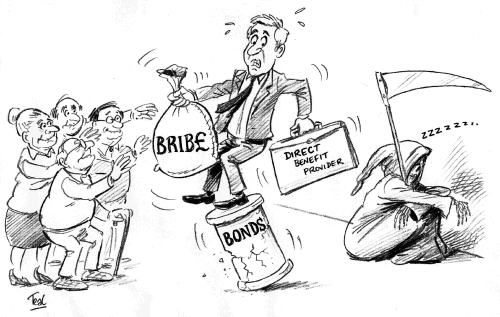Bond prices are falling, which means that bond yields are rising, which means that defined benefit pension providers which need to buy a guaranteed income for their retirees, are getting more for their money.
A case was quoted in the FT recently of a 40 year man who asked his defined benefit scheme for a transfer value in 2009. The answer was £63,000, which was about 12 times his expected income when he turned 65. He asked the same question again at the end of last year. This time the answer was nearly £300,000, or 40 times his expected income. So, should members of defined benefit schemes be looking to cash in? In respect of the case quoted, most advisers would probably say ‘yes’. Were the fund distressed though, in other words showing a deficit against liabilities which is the current situation with the majority of defined benefit schemes, then the case for ‘cutting and running’ is even stronger.

Advisers however need to be wary. With a compensation culture which is based on retrospective wisdom, they could face claims if things do not work out as expected. Moreover, there is still a perception in regulatory circles that ‘defined benefit is best’ regardless of other factors. The fact the regulators defined benefit scheme is topped up annually by a levy on those it regulates, doubtless shields them from the cold wind of reality.
So advisers need to be very careful. Prudence dictates that they should give their clients all the available facts and figures, but insist – and record – that the final decision is made by the client.
[hr]
The above is the lead article in our latest monthly News Notes – January 2017. Other topics in this edition include:
- Contracts for Difference (CFDs)
- P2Ps
- Home Ownership
- Death of Salary Sacrifice
- Adviser Charges
- MiFID II
Haven Risk Management : FCA Compliance Consultants
